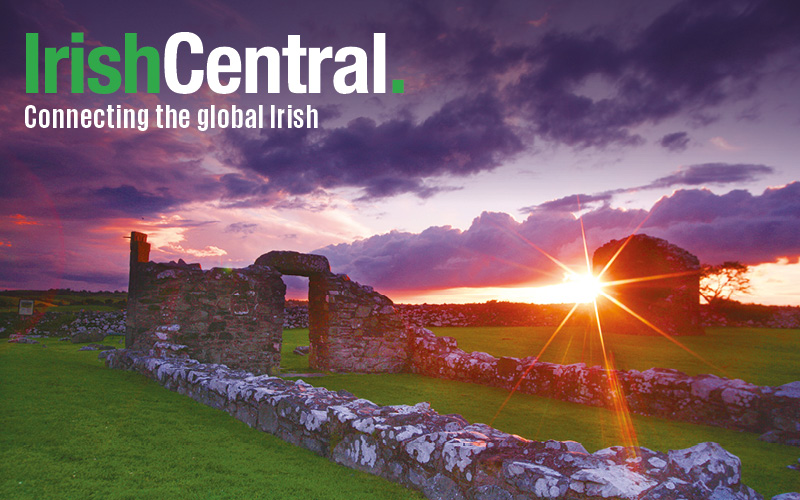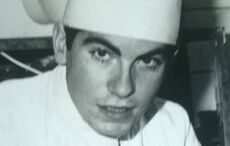The Stone Age community that built Ireland’s world famous Newgrange monument over 5,000 years ago might have been among the earliest people to realize that the human soul survives physical death and journeys to a wonderful otherworld, a new book reveals.
“Newgrange: Monument to Immortality” investigates the celebrated megalithic tumulus in Ireland’s Boyne Valley and suggests, among other things, that its builders understood the eternal nature of the human spirit.
“It could be said that Newgrange is as much a womb as a tomb,” says author Anthony Murphy, who has been investigating the prehistoric monuments of the Boyne for the past 15 years.
“The cosmology of the monument is about death and birth and the cycles of the sun, moon and planets. On the winter solstice, the shortest day of the year, the sun shines down the long passageway into the central chamber. At this moment, the old sun dies and the new sun is born.”
Murphy suggests that there is an intense spirituality about Newgrange, which is described through ancient mythology as a sort of portal between this world and another world.
“The legends of the Tuatha Dé Danann, who were the original gods of ancient Ireland, suggest that they retreated into the mounds and raths, which are very much seen as sanctified entrances to a heavenly otherworld variously described as Tír na nÓg (Land of Youth), Tír na mBeo (Land of the Ever Living Ones) and Magh Mell (The Plain of Happiness).”
The gods were said to be able to wander between this world and heaven using the mounds.
It is this liminal aspect of Newgrange, and its giant sister sites of Knowth and Dowth, that make these extraordinary monuments shrines to the idea of eternal life.
“Many people in Ireland and around the world have had what we call a Near Death Experience (NDE), where a person dies and is brought back to life, perhaps resuscitated on an operating table,” said Murphy.
“Their stories of a journey to ‘the other side’, so to speak, are remarkable. In 95% of cases, there is a journey through a dark tunnel or void of some kind, towards a brilliant light. In some ways, the structure of Newgrange replicates this journey.”
It has long been suggested that Newgrange is a passage-tomb by archaeologists, who propose that the bones of the deceased were placed in ceremonial bowls in the chamber. Perhaps it was thought that with the emergence of the light of the winter solstice sun into the chamber, the souls of the deceased would be transported to the otherworld.
Murphy said, “It is entirely possible that there were people in the Neolithic who had a brush with death, and who underwent a Near Death Experience, only to return to this life to relate their remarkable tale of journeying down the tunnel towards the light.”
Newgrange was the abode of the principal deity of the Tuatha Dé Danann, The Dagda, who was a sun god. He was later tricked out of the ownership of Brug na Bóinne, as Newgrange was known, by his son Aonghus. In these figures of myth, says Murphy, we see reflections of the Christian God and his divine son, Jesus.
“If you look at the mythology and symbolism of Newgrange and its gods, you see many similarities with more familiar figures of modern religion,” Mr. Murphy said.
“Aonghus was born through a supernatural union to a virgin mother. His symbol is the cross, represented by the cruciform design of the Newgrange chamber, and the date most strongly associated with Newgrange is winter solstice, which in many ways was the prehistoric celebration of a festival we now commemorate as Christmas.”
“Newgrange: Monument to Immortality” goes deep into the mind and soul of our Neolithic ancestors to better understand what motivated them to build this remarkable monument. In a deeply moving, poetic and philosophical exploration, Anthony Murphy looks beyond the archaeology and the astronomy to reveal a much more profound and sacred vision of a sophisticated people who were driven to create this marvellous testament to their time.
“The message of Newgrange is an eternal one, and survives across more than five millennia, to speak to us of our long forgotten ancestors of yesteryear,” Murphy said.
“That message is as relevant today as it has ever been, throughout the long centuries of oppression and imperialism. The magic of the Tuatha Dé Danann, representing the uplifting aspects of the Irish spirit and the Irish psyche, is alive today, but perhaps hidden in the dark chamber of Newgrange, awaiting the coming of the light.”
‘A community of our ancestors worked diligently and tirelessly to build Newgrange and its sister monuments, each comprising of a quarter of a million tonnes of stones and earth.’
The author contends that Newgrange was built as an everlasting memorial to that time in prehistory when mankind first emerged from the forests of the Mesolithic to establish the early foundations of modern society as we know it today.
The book is an exploration of many themes, including archaeology, mythology, astronomy, cosmology, spirituality and psychology.
The author Anthony Murphy is a journalist and writer who lives with his wife and five children in Drogheda, just five miles from Newgrange. He has been researching the ancient megalithic culture of Ireland for fifteen years and is author, with Richard Moore, of the acclaimed Island of the Setting Sun: In Search of Ireland’s Ancient Astronomers, first published in 2006. His website is www.mythicalireland.com
It is available on www.theliffeypress.com and www.amazon.co.uk.
Here’s a video on the upcoming book:




Comments